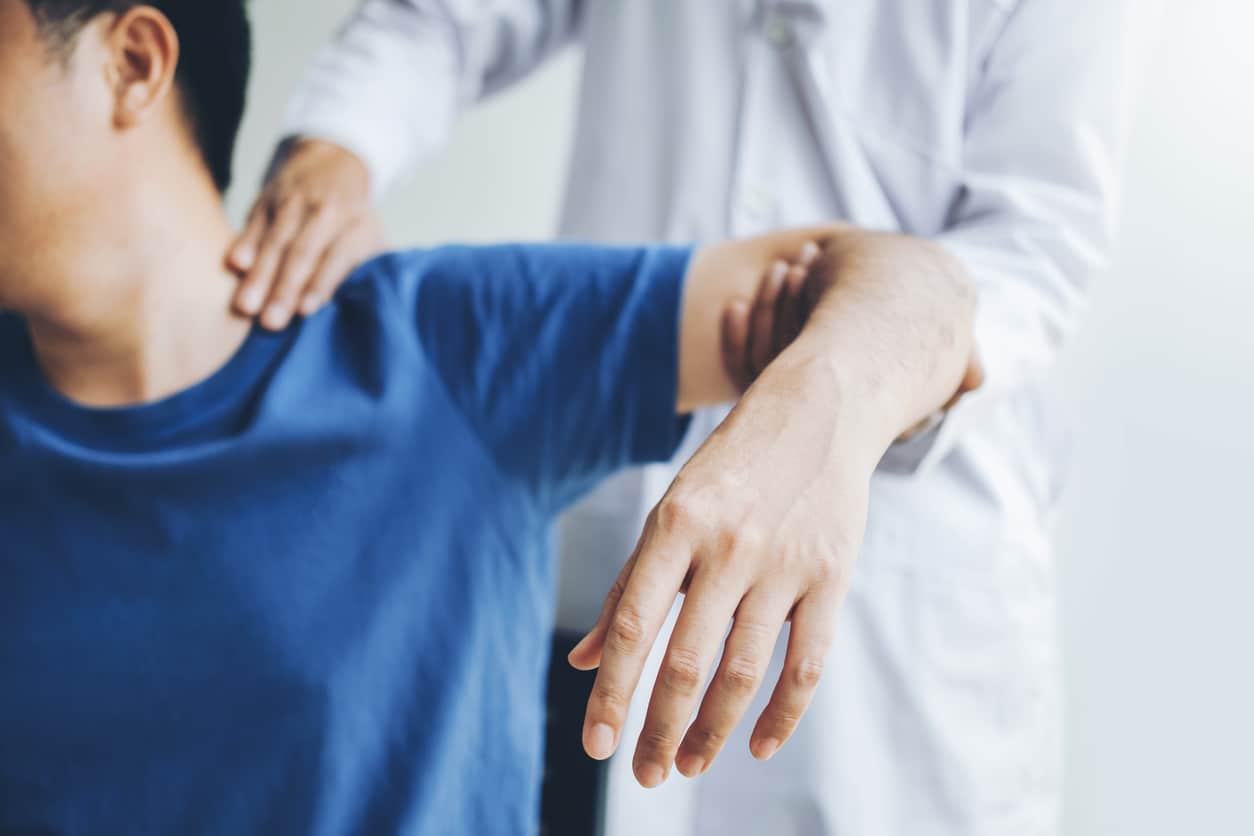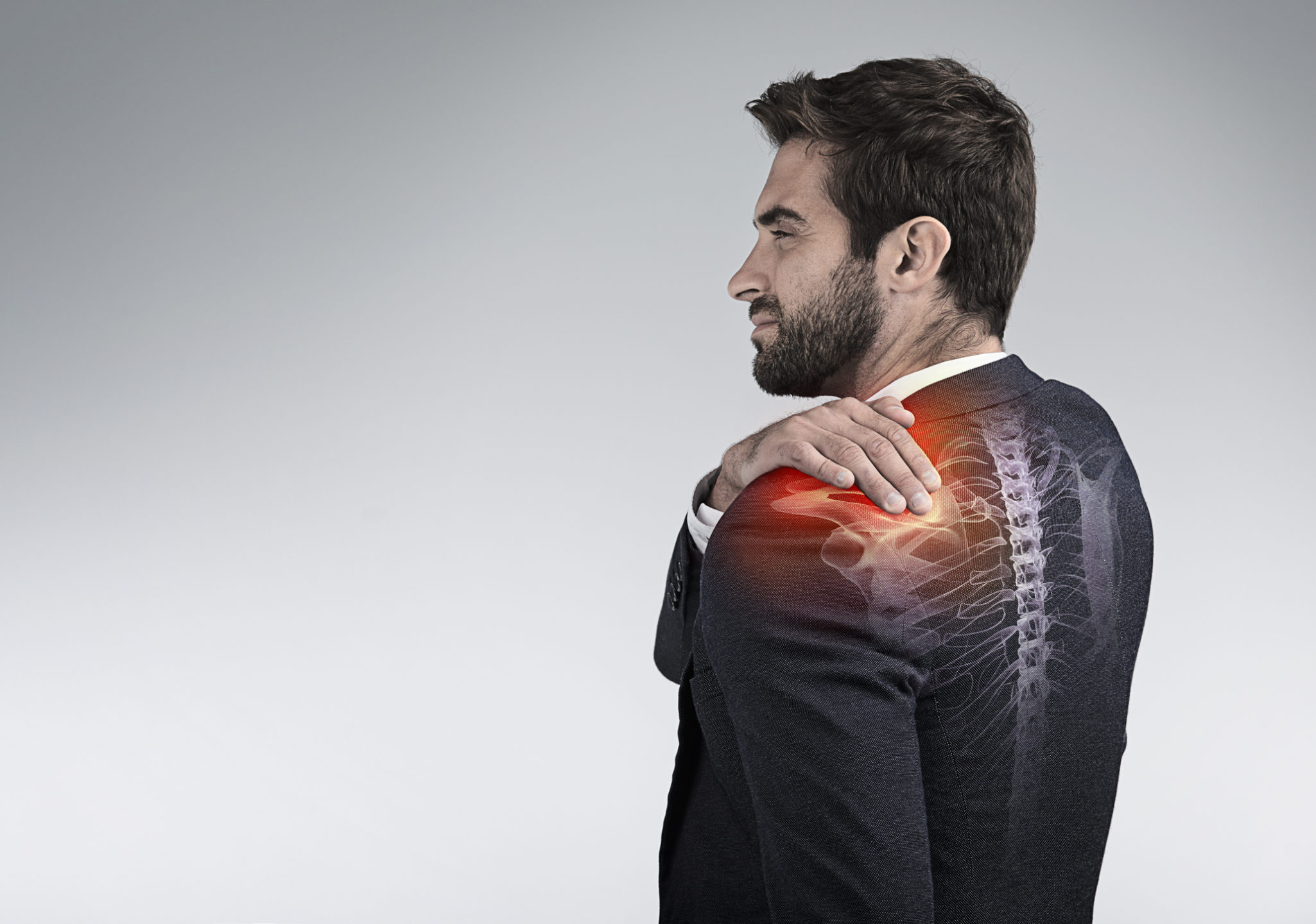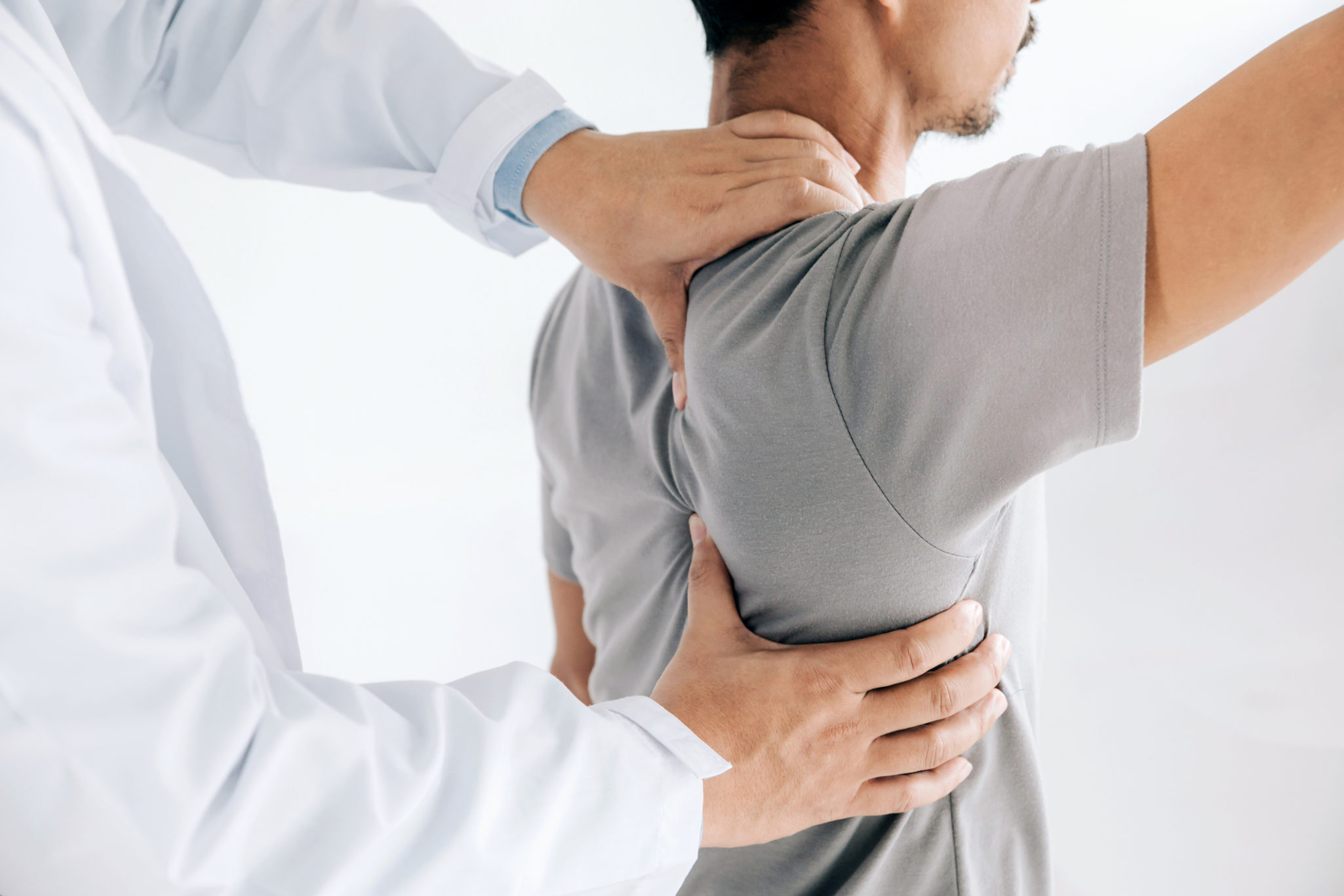The socket of the shoulder, or glenoid, is covered with a layer of cartilage called the labrum that cushions and deepens the socket to help stabilize the joint. Traumatic injuries and repetitive overhead shoulder movements may cause a tear in the labrum, leading to pain, limited motion, instability and weakness in the joint.
If you are suffering from a labral tear and are seeking treatment on Long Island or the surrounding areas, call 631.689.6698 today for a personalized consultation with one of our experienced orthopedic surgeons!
Patient Testimonial
"everyone I came in contact with was professional and kind and organized. Dr Brennan took the time to explain my condition to me in a way I could understand. it means a lot to walk away from a doctor visit understanding your condition and with confidence in your doctor that he will be able to make it better."
- Mary-Ann F.
Symptoms of a Labral Injury
Symptoms of a labral injury may include shoulder pain and a popping or clicking sensation when the shoulder is moved. Some people experience weakness and a restricted range of motion as well.

Are there different types of labral tears?
There are three main types of labrum tears:
- SLAP tear — Here the tear is above the middle of the glenoid. SLAP stands for “superior labrum, anterior to posterior,” which means front to back. This is the common form of labrum tear in tennis, volleyball, and baseball players, and anyone who frequently uses overhead arm movements.
- Bankart tear — Damage here is in the lower half of the glenoid socket. This is more common in younger people who dislocate their shoulder.
- Posterior labrum tear — This type of injury occurs in the back of the shoulder joint. These are rare, occurring in only 5 to 10 percent of all shoulder injuries.
Diagnosing a Labral Injury
A labral tear is typically diagnosed through imaging tests, a physical examination and a review of symptoms. While many labral tears can be treated by managing pain symptoms through medication and undergoing physical therapy, some cases require surgical treatment.
How soon after injuring my shoulder can I get it repaired with surgery?
That depends on the severity of your injury. At Orthopedic Associates of Long Island, our first treatment approach is always the most conservative option. But in cases of serious trauma to the shoulder surgery could be immediately necessary. In other cases, the labral tear could create shoulder instability, leading to partial or full dislocations during normal movements. In these cases, surgery would be necessary so the patient could return to normal life without worrying about dislocations.

If the injury is not severe, at least in initial symptoms, the first treatment steps are the use of anti-inflammatory medications and possible cortisone injections, along with physical therapy. If these treatments aren’t showing success and your shoulder continues to be weak and painful, surgery could be deemed necessary at any point.
What kind of anesthesia is used during a Labral repair surgery?
These surgeries can be done with the patient under general anesthesia or with regional anesthesia, also known as a nerve block.
How do I prepare for labral repair surgery?
You’ll need to prepare for this surgery as you would any surgery: stop taking blood thinners and anti-inflammatory medications about one week before your procedure. If you smoke, you’ll need to stop at least two weeks before and after, as smoking can decrease circulation and impede healing. You’ll need to stop taking most supplements for one week before your surgery. We’ll instruct you on eating and the like.
Your real preparation should be for your recovery. Your shoulder will need to be fully immobilized in a sling for around four weeks. You won’t be able to lift anything with that arm for the same period of time. It’s very important to be cautious with your recovery, as this will directly help or hinder your recovery and the future use of your shoulder.
So, you’ll need to practice doing things with your other arm, if the injured shoulder is on your main side. If you’re right-handed and that’s the injured side, you’ll need to practice everything from writing to brushing your teeth with your opposite arm and hand. It’s a good idea to bring often used items down so you don’t have to reach up for them. You want to limit your stretching of the shoulder at all until you’re cleared to begin physical therapy.
During our consultations leading up to your surgery, the team at Orthopedic Associates of Long Island will help you with your preparations and knowing what to expect.
The Shoulder Labral Repair Procedure
Labral repair surgery trims the damaged portion of the labrum in the shoulder and if necessary, secures it with staples, anchors or sutures. This outpatient procedure is usually performed through arthroscopy, which allows the doctor to view the tear through a small camera and insert the specialized tools through tiny incisions. Patients can benefit from less tissue damage, shorter recovery times and less scarring with arthroscopic techniques. However, larger tears may require an open procedure.
Once anesthesia has been administered, the surgeon will make the incisions in the shoulder area. Upon obtaining a visualization of the labrum, the injury can be better evaluated. The torn area will be removed and all necessary repairs are made. If a separation from the tendon has occurred as well, it may require the use of sutures and anchors to achieve fixation by drilling tiny holes in the glenoid bone in which the anchors are then embedded. Sutures are used to connect the labrum to the anchors, maintaining the correct positioning of the labrum and preventing the labrum from detaching again.
How long does a labral repair surgery take?
Surgical debridement of torn tissue or arthroscopic stabilization of a labral tear normally takes about two hours. These are performed in our state-of-the-art PrecisionCare Ambulatory Surgical Center.
Risks of a Labral Repair Procedure
Labral repair procedures are considered safe, but all forms of surgery carry some risk. The risks generally associated with a labral repair may include infection, bleeding, formation of a blood clot, shoulder stiffness, shoulder weakness and nerve damage.
Recovery From a Labral Repair Procedure
It is important to properly support and protect the arm immediately following a labral repair surgery, so most patients typically wear a sling for three to four weeks after the procedure. Physical therapy begins soon after the surgery and can be very helpful in restoring the flexibility, strength, and full range of motion to the shoulder. Most patients can typically return to jobs and other activities that are mainly sedentary after a few weeks. As healing progresses, athletes will be able to gradually participate in sports again.

Complete recovery time may vary and depends on a number of factors, including whether the procedure was performed using an arthroscopic or open approach, but usually takes several months. Labral repair surgery is usually effective in treating labral tears, eradicating pain and regaining complete mobility in the arm.
How long will my repaired labrum hold up after surgery?
These are permanent repairs to your injured shoulder. They are very successful, and the results are enduring. Full recovery will usually take about six months. From there, depending on the complexity of your injury and the surgery to repair the damage, there may be some limitations on future use, but this is not typically the case. In the vast majority of our Orthopedic Associates of Long Island labral tear patients, they can return to their previous level of sports or exercise with few if any restrictions. The success rate for these procedures, where the patient is able to return to their normal activities without any further dislocations, is over 90 percent.
Call Our Talented Physicians For Labral Repair In Long Island!
For more information or to schedule your appointment today, call Orthopedic Associates of Long Island at 631.689.6698. You can also book your labral repair consultation with our experienced doctors by filling out the form in our contact page. Our practice has seven office locations on Long Island, and we look forward to serving you!


